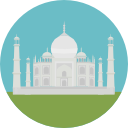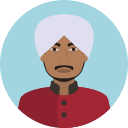Contents
The Roman Catholic Church Was the Most Powerful Institution in Western Europe
Main idea
The Catholic Church was powerful across large portions of northern and western Europe and held influence over the lives of ordinary people and elites. Christian monasteries functioned as centers of religion but were also important places of learning and the arts.
In the year 1000 CE, there was little that unified Western Europe. The politically fragmented continent had many large and small kingdoms with independent rulers. Warfare between kingdoms was common, and borders shifted often. Different European people also spoke many languages and had varying cultural practices.
Christianity provided a common link: Christianity was one commonality that provided a unifying force across Europe. In Western Europe, until the Protestant Reformation in the 16th century, Christianity was the Roman Catholic Church. The Catholic Church was the center of social, political, and religious life, from kings and nobles to peasants and serfs.
- Until the 16th century, the Roman Catholic Church was Western Europe’s most powerful political institution.
- Most in Europe accepted the Pope as God’s representative on earth.
- When the Pope crowned a king, it symbolized God crowning and supporting a king’s rule.
- For most people, daily existence was challenging and full of suffering. The Church offered a path to salvation and the promise of eternal bliss beyond earthly pain.
Rulers across history have claimed authority to rule from God. Catholic Popes claimed that God chose them to lead the Church. Monarchs in Europe also claimed authority to rule from God. In Europe, they called it the divine right of kings. In China, it was called the Mandate of Heaven.
The decline of Church power: While the Catholic Church and Pope remain influential in the modern world, their power began steadily declining in the 15th century. By the 19th century, the Pope had gone from an influential political and religious figure to a purely spiritual leader.
Church law
Canon law was the law of the Church. It dictated many areas of life, including marriages and religious practices.
- For people who strayed from the Church’s teachings, the Church held the power of ex-communication (removal from the Catholic Church), which Catholics believed led to the soul’s eternal damnation into hell.
- The Church’s excommunicating power covered everyone, from agricultural workers to kings.
Click through the image below to explore about Doom art and its role in Medieval religious life.
Christian monasticism
Christianity is a monastic belief system. Christian monks and nuns lived away from society in monasteries and devoted their lives to prayer, meditation, and reflection.
- Monasteries also served as centers of European learning.
- Christian leaders also supported the creation of art in monasteries.
- Monks and nuns could often read and write and produced the written documents and books used by churches.
- Monasteries had extensive libraries that stored intellectual knowledge and religious texts.
Monasteries were centers of European culture: Christian monasteries were also centers of creative and artistic production. As monastic scribes produced books and manuscripts, artists would decorate pages with elaborate artistic drawings and detail. Musical arrangements were also composed in monasteries to aid Christian worshipers in prayer and scripture reading. Because European artists were associated with the Church, most European art in the middle ages focused on religious themes.
Saint Thomas Aquinas
Saint Thomas Aquinas (1225-1274) was an Italian monk, philosopher, and Catholic priest considered one of the Catholic church's greatest religious scholars and philosophers. Aquinas spent his life attempting to meld faith and philosophical reason. He believed that God's existence could be proven using the principles of reason, as laid out by the ancient Greek philosophers. Philosophies that Islamic scholars had recently reintroduced to Western Europe through Muslim Spain.
Hildegard of Bingen
Hildegard of Bingen was a 12th-century nun who was a renowned artist and composer. She wrote about her visions of God and the divine in multiple novels, songs, and plays. Artists incorporated her dreams into elaborate works of art that adorned the manuscripts that contained her writings.
The Catholic Church Splits: The Rise of Eastern Orthodox Christianity
Main idea
Differences between Christian leadership in Western Europe and the Byzantine Empire led to a split in the Catholic Church and the creation of Eastern Orthodox Christianity.
From the time of the Roman Empire, European Christianity had developed two competing power centers: the Catholic Pope in Rome and the Eastern Orthodox Pope in the Byzantine Empire (old Easter Roman Empire).
The Great Schism: Disagreements between the Pope in Rome and Byzantine Christian leaders were common. Eventually, the differences led to the official separation of the Catholic and Byzantine churches in 1054. The Catholic Pope was in Rome, and the Eastern Orthodox Patriarch (the leader of the Orthodox Church) was in Constantinople, the capital of the Byzantine Empire.
Portions of Eastern Europe slowly converted to Eastern Orthodox Christianity: Eastern Europe was one of the last European regions to convert widely to Christianity. Because the Eastern Orthodox Church was closer to the kingdoms of Eastern Europe, its influence spread into the region.
- Kievan Rus (modern Kyiv, Ukraine) was a 10th-century power in Eastern Europe. In 989, their leader Prince Vladimir I, legally abolished the old pagan religions of the area when he converted to Eastern Orthodox Christianity. Eastern Orthodox Christianity became the official state religion of Kyiv Rus.
- Russia later became a significant Eastern European power and adopted Orthodox Christianity.
All religions and belief systems change over time and as they diffuse into new places. Just like Christianity developed various versions, so did Buddhism as it moved across trade routes from South Asia to East and Southeast Asia. Original Theravada Buddhism adopted new practices and beliefs, which resulted in the Mahayana and Tibetan forms of Buddhism.
The Crusades: The Christian, Jewish, and Islamic Communities Collide
Main idea
The Crusades were a series of conflicts between the 11th and 13th centuries that sought to spread Christinaity into new areas of Europe and reconquer territory from Muslims that had previously been Christian.
By the 11th century, Muslim armies had conquered and converted portions of Europe and the Mediterranean region that had formerly been Christian. The Christian holy lands in modern Palestine and Israel had also fallen to Muslim armies.
What were the Crusades?
The Crusades were a series of conflicts to spread Christianity and the power of Christian states. The Crusades were not one event but several events with various goals that took place between the 11th and 13th centuries.
Source: This speech was given in 1295 in Clermont, France. In the speech, the Pope calls on Christians to launch a holy crusade against Turkish Muslim forces to retake the holy lands for Islam after Christians were denied access to Christian holy sites by the new Turkish Islamic power in the region.
From the confines of Jerusalem and the city of Constantinople a horrible tale has gone forth and very frequently has been brought to our ears, namely, that a race from the kingdom of the Persians, an accursed race, a race utterly alienated from God, a generation forsooth which has not directed its heart and has not entrusted its spirit to God, has invaded the lands of those Christians and has depopulated them by the sword, pillage and fire;…
Whoever, therefore, shall determine upon this holy pilgrimage and shall make his vow to God to that effect and shall offer himself to Him as a, living sacrifice, holy, acceptable unto God, shall wear the sign of the cross of the Lord on his forehead or on his breast. When,’ truly’,’ having fulfilled his vow be wishes to return, let him place the cross on his back between his shoulders. Such, indeed, by the twofold action will fulfill the precept of the Lord, as He commands in the Gospel, “He that taketh not his cross and followeth after me, is not worthy of me.”
The goals of the Crusades
The Crusades had several goals.
Goal 1: recapture the Holy Lands
Crusaders conquered Jerusalem during the First Crusade in July 1099. Following the defeat of Islamic forces in the region, the Crusaders set up several small kingdoms led by Christian European nobles known as Crusader Kingdoms. However, a Muslim leader named Saladin defeated the Christian Crusader kings in 1187 and reconquered the Holy Lands. Christian rule over the Holy Lands ended again after less than 100 years.
Goal 2: retake other Christian lands conquered by Islam
In 711, Muslim forces began the conquest of the Iberian Peninsula in Eastern Europe. Muslims controlled at least some portion of the peninsula until 1492, when the armies of King Ferdinand and Queen Isabella drove out the last Muslim armies when they defeated the Granada Caliphate.
Goal 3: purify the Christian world
At times, Popes approved of various campaigns called crusades against those in and around Europe whose Christian practice the Church viewed as heretical (sinful and not Church approved). While the Church did suppress some short erm dissent, dissenting views eventually split the Church apart during the Protestant Reformation in the 16th century.
Goal 4: expand Christianity into non-Christian European lands
The Church also approved military campaigns against northern and eastern European groups who continued to practice their traditional pagan belief systems. Targeted groups and regions included modern-day Estonia, Finland, Hungary, Latvia, Lithuania, Norway, Poland, Sweden, Russia, and Ukraine. By the 14th century, most leaders of these areas had converted and suppressed the practice of their people's older traditional beliefs.
The effects of the Crusades
The Crusades left a legacy in Europe that reshaped European life.
Jewish diaspora communities had a long-established presence throughout Europe. The Crusades began a period of heightened danger, discrimination, and massacre for the Jewish people.
- After reconquering the Holy Lands, Muslims persecuted Jewish people, who they felt had betrayed them by supporting Christians.
- In Europe, Crusading armies sometimes targeted Jewish populations. In the 1090s, as the Pope called for soldiers to fight the first Crusade, German Christians attacked and massacred Jewish communities in the Rhineland between modern France and Germany.
- Following Spain’s complete reconquest from Islamic control in 1492, Christian monarchs Queen Isabella and King Ferdinand issued a legal decry expelling all practicing Jews from Spain.
The Crusades increased knowledge and technological transfer from Islamic and Byzantine civilizations into Europe. This knowledge and technology developed Europe socially and economically. These developments later led to the European age of exploration and conquest. Significant impacts from these cultural transfers included:
- European scholars gained access to Greek philosophical classics, medical manuals, Islamic art and textiles, and technology like the spinning wheel for creating cotton textiles.
- As new information filtered into Europe, students and scholars became increasingly interested in studying new mathematical, astronomical, medical, and scientific ideas.
- More students and scholars led to new universities in European cities like Paris, France, and Oxford and Cambridge in England.
The Crusades also expanded European global trade links. New trade routes that connected Southern European merchants to merchants in the Holy Lands and Byzantine Empire. New luxury goods made their way across Europe. These new goods further stimulated the elite classes’ desire to support increased trade to gain access to increased luxury goods and comforts.
Many feudal lords and their armies of knights answered the call of the Church to fight in various Crusades. Many died along the way or in battle and did not return home. Others lost their fortunes. As a result, kings became more powerful and wealthy within their kingdoms. As monarchs’ power increased, they could increasingly challenge the Pope’s and the Church’s authority.
































